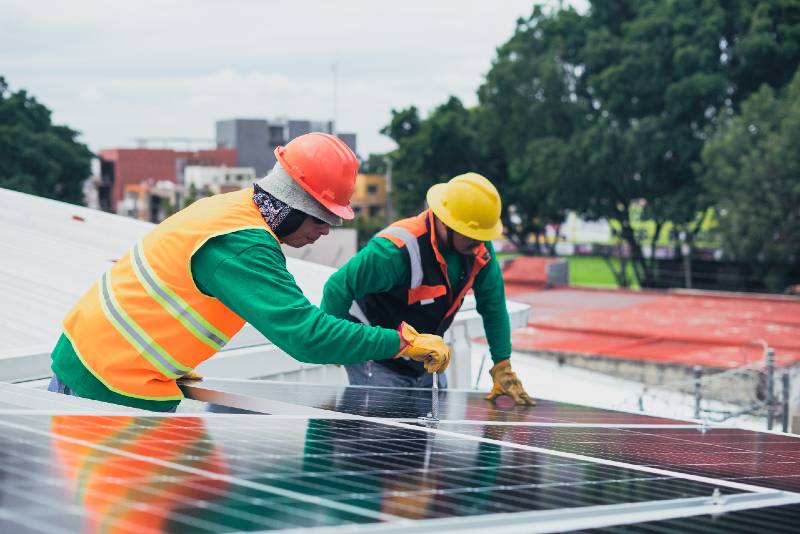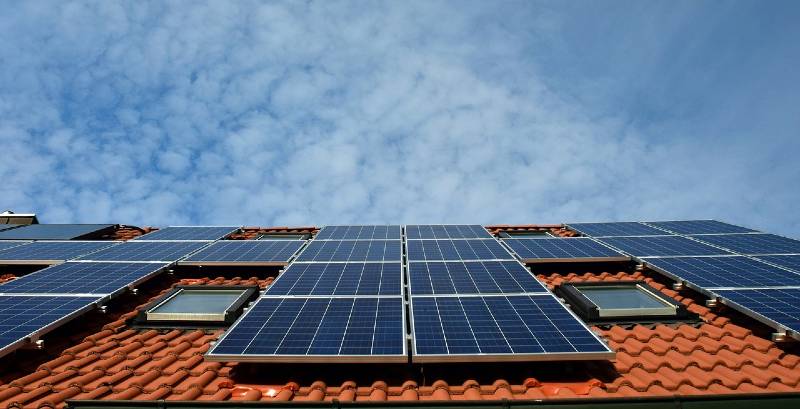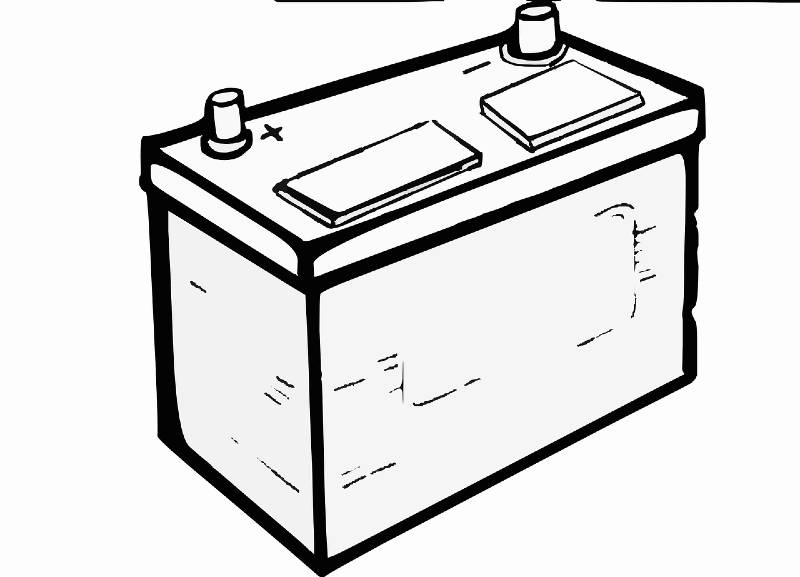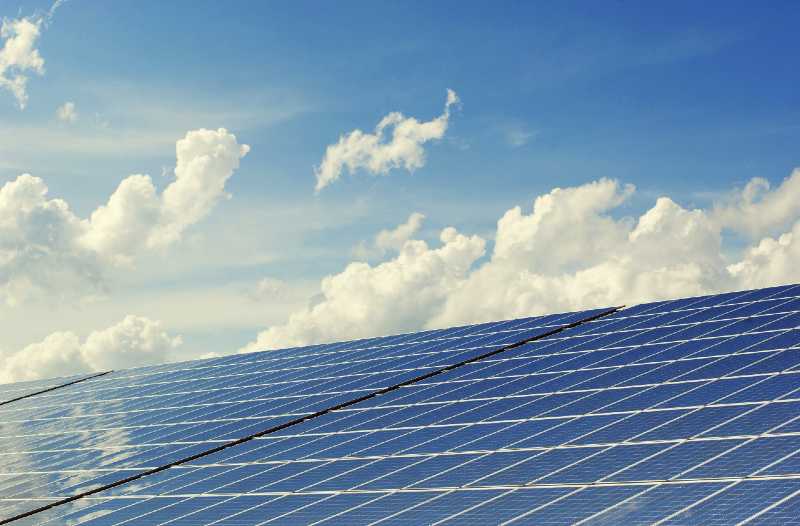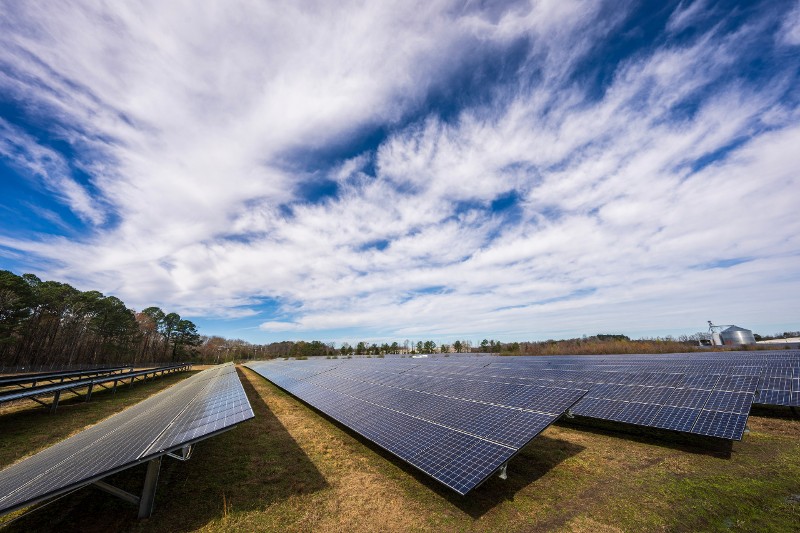Are you tired of the rising electricity bills from running your pool pump?
Turning to solar energy can be your pathway to savings.
But the question remains: How many solar panels do you need to switch your pool pump to solar and start cutting down on those hefty utility bills?
We can give an initial estimate of about 7 solar panels, each with a 300-watt capacity, to fully power your pool pump using solar energy.
In this article, I’ll walk you through the process of calculating your pool pump’s energy needs, understanding your local peak sun hours, and determining the number of solar panels.
Key Takeaways
- To calculate the number of solar panels to run a pool pump, determine the pump’s daily energy consumption by multiplying its wattage by the daily usage hours.
- Next, find out your location’s peak sun hours to understand the effective sunlight hours that can be utilized for solar energy production.
- Calculate the theoretical size of the solar system required by dividing the pool pump’s daily energy needs by the peak sun hours specific to your area.
- Adjust the calculated solar system size by about 14% to account for potential energy losses due to factors like weather conditions and panel positioning.
- Finally, determine the exact number of solar panels by dividing the adjusted system size by the wattage of a single solar panel.
How Does a Solar Pool Pump Work?
A solar pool pump works by tapping into the sun’s energy to keep your pool water fresh and clean.
Here’s the lowdown: the pump uses solar panels to catch sunlight and convert it into electricity.
This electricity isn’t the usual kind you get from the wall socket; it’s direct current (DC), which is just what the solar pool pump needs.
So, what does this pump do with all that solar power?
It gets busy moving your pool water around, pushing it through a filter to keep everything clean and inviting.
The cool part is, since it’s all running on sunlight, you’re not racking up extra electricity bills.
And here’s the best bit: setting up this system is pretty flexible.
You don’t need to stick the panels on your roof unless you want to.
You can place them anywhere they’ll get some good sun – maybe on a shed or just mounted in your yard.
It’s all about keeping your pool ready for a dip, anytime, without costing the earth or your wallet.
How to Calculate the Number of Solar Panels to Run a Pool Pump?
1. Calculate Your Pool Pump Energy Consumption
Before we dive into the calculation, let’s first break down how much power your pool pump is using.
To do this, you’ll need to know the pump’s wattage, which indicates how much power it uses.
However, often, pool pumps are measured in horsepower (HP), not watts.
So, if your pump’s power is given in HP, we’ll convert it to watts.
Why?
Because when we talk about energy consumption, watts give us a clearer picture.
Here’s how the conversion works: 1 horsepower equals 745.7 watts.
So, if your pump is rated at, say, 2 HP, you would multiply 2 by 745.7 to get the wattage:
Wattage = Horsepower × 745.7
Wattage = 2 × 745.7 = 1,491.4W
Now that we know the wattage of your pool pump is 1,491.4 watts, let’s figure out how long it needs to run each day.
This is where your pool’s turnover rate and volume come into play.
The turnover rate is how fast your pump can move water.
If your pump processes 52 gallons per minute, that’s 3,120 gallons in an hour (since 52 gallons per minute times 60 minutes equals 3,120 gallons per hour).
Next, calculate your pool’s volume.
If you have a rectangular pool, multiply its width, length, and depth in feet, and then multiply the result by 7.5 to convert cubic feet to gallons:
Volume (gallons) = Width (ft) × Length (ft) × Depth (ft) × 7.5
For a circular pool, the formula changes a bit:
Volume (gallons) = 3.14 × Radius (ft)^2 × Depth (ft) × 7.5
If your pool has varying depths, just find the average depth by adding the deepest and shallowest points and dividing by 2, and then use that average in your calculations.
For our example, let’s assume we have a rectangular pool with dimensions of 30 feet in length, 15 feet in width, and 6 feet in average depth.
To find the volume in gallons, we use the formula for a rectangular pool:
Volume (gallons) = Width (ft) × Length (ft) × Depth (ft) × 7.5
So, our pool’s volume would be:
Volume = 30 × 15 × 6 × 7.5 = 20,250 gallons
Now that we have the pool volume, let’s calculate how many hours the pump should run each day.
We divide the pool volume by the turnover rate:
Run Hours (hours/day) = Pool Volume (gallons) / Turnover Rate (GPH)
With a turnover rate of 3,120 gallons per hour:
Run Hours = 20,250 gallons / 3,120 gallons/hour ≈ 6.49 hours/day
So, the pump needs to run approximately 6.49 hours each day to circulate the water in the pool completely.
Finally, let’s determine the daily energy consumption of the pool pump.
Multiply the pump’s wattage by the operational hours:
Daily Energy Consumption (watt-hours) = Wattage (watts) × Run Hours (hours/day)
Daily Energy Consumption = 1,491.4 × 6.49 = 9,679.5 watt-hours
This calculation tells us that the pool pump uses approximately 9,679.5 watt-hours (or about 9.68 kWh) of energy each day to keep your pool clean and circulating.
Related article: How many solar panels do I need to run air conditioner
2. Find out Your Peak Sun Hours
The amount of energy solar panels produce is all about how much sunlight they get and how intense that sunlight is.
However, sunlight intensity isn’t constant; it fluctuates throughout the day and varies with weather conditions.
For instance, solar irradiance might be 300W/m² at one moment and surge to 1,000W/m² the next.
This variation could make calculating how much energy your solar panels will produce a bit of a headache.
But there’s a handy concept called “peak sun hours” that simplifies this for us.
Peak sun hours don’t refer to just any sunlight hours; they denote the hours when solar irradiance averages 1,000 watts per square meter.
Simply put, if you have four hours with 500W/m², that’s equivalent to two peak sun hours.
You can use resources like the NREL (National Renewable Energy Laboratory) calculator to find out the peak sun hours specific to your area.
I’m going to go with Los Angeles, California, as an example, which enjoys about 6.04 peak sun hours on average.
3. Calculate Your Theoretical Solar System Size
Now, we’ve gathered the crucial info: the pool pump’s energy usage and the peak sun hours for our location.
To get the size of the solar system, divide the daily energy needs of your pump by the peak sun hours:
Required Solar System Size (kW) = Daily Energy Consumption / Peak Sun Hours
Required Solar System Size = 9.68 kWh / 6.04 hours = 1.6 kW
This result, 1.6 kW, is the ballpark figure for the capacity your solar system should have to meet your pump’s energy demands in that specific locale.
But let’s keep our feet on the ground – there are always variables like the weather, the positioning of your panels, and their efficiency that can influence the final output.
So, we still need to add a little extra to account for these variables to make sure the pool pump can run smoothly on solar power alone.
4. Factor in Solar System Losses
You know, solar panels are a bit like us – they have their ups and downs.
On a bright, sunny day, they’re all charged up, working at their peak, just like how we feel when we’re firing on all cylinders.
But then there are those other days – maybe it’s cloudy, or a tree casts a shadow, and suddenly, they’re not hitting their usual marks.
That’s why we throw in a bit of padding to our calculations – think of it as carrying an extra bottle of water on a long hike, just in case.
To cover our bases and ensure your pool pump has the energy it needs every day, we’ll bump up our system size by 14%:
Adjusted System Size (kW) = System Size (kW) x 1.14
So, for your pool pump:
Adjusted System Size (kW) = 1.6 kW x 1.14 = 1.83 kW
This extra step adds a safety net, making sure your pool pump gets a steady power supply, even when your solar panels are dealing with clouds or shade.
Related article: How many solar panels do I need to run a fridge
5. Calculate the Number of Solar Panels
Solar panels vary in size and power output, with common options ranging from 250 to 400 watts per panel.
Say we’re using panels that provide 300 watts each.
To determine the number of panels required for your pool pump, you’ll divide the adjusted system size by the wattage of a single panel.
Here’s how that math works out:
Number of Panels = Adjusted System Size (kW) / Panel Wattage (kW)
Doing the calculation:
Number of Panels = 1.83 kW / 0.3 kW ≈ 6.09
We can’t split a solar panel in half for practical purposes, so we’ll need to round up to the next whole number.
Therefore, we would require 7 solar panels, each with a 300-watt capacity, to ensure your pool pump has a consistent and reliable power supply.
Related article: How long does it take for solar panels to pay for themselves
FAQs
Can I Run My Pool Pump With Solar Panels?
You can run your pool pump with solar panels by ensuring the solar system’s capacity matches the energy consumption of your pump.
Can a 100 Watt Solar Panel Run a Water Pump?
A 100-watt solar panel can run a small water pump, but its suitability depends on the pump’s energy requirements and operational hours.
How Do You Calculate the Number of Solar Panels Needed for a Pump?
To calculate the number of solar panels needed for a pump, calculate the pump’s daily energy usage, factor in your area’s peak sun hours, adjust for system losses, and divide by the wattage of your chosen panels.
Conclusion
As promised, we’ve covered the steps to determine the number of solar panels needed to power your pool pump, turning a complex decision into a manageable calculation.
But here’s a thing: while the estimate of 7 solar panels gives you a solid starting point, remember that every home and situation is unique.
I prefer you to view this number as a guideline rather than a hard-and-fast rule.
To ensure the best outcome, I recommend conducting a thorough assessment of your specific needs, possibly with the help of a professional.
They can consider additional factors like potential shading, the angle of your roof, and even local incentives that might be available for solar energy.

